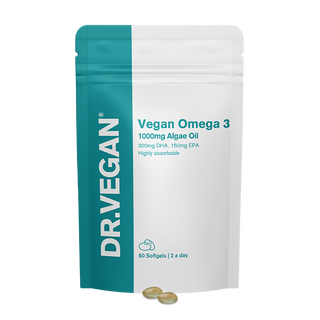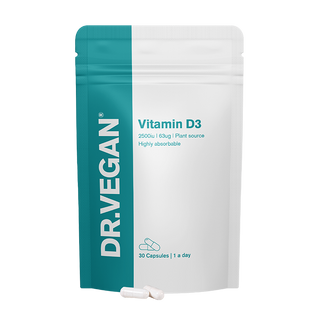Surprising animal ingredients involved in food production

Some foods can be delicious but also deceiving. Lots of food products contain unusual ingredients with unknown origins, and it can be confusing when you’re trying to navigate food labels.
It might also surprise you that many ingredients in food products and supplements come from animals or involve animals during their production. Animal ingredients are often used as bulking agents, or binders, or to generate a desired consistency in a cheap way. We shine the light on surprising foods that contain animal ingredients.
Animal ingredients in food production
Whether you follow a plant-based diet or not, considering a sustainable approach to your food choices, especially with regard to animal welfare and the environment, is a win-win for your health and the planet.
You may also enjoy our articles #CheckTheLabel and 'Animal ingredients involved in supplements'.
Animal ingredients in bottled juices
Carmine, also known as 'carmine cochineal' or 'carminic acid', is a red pigment substance extracted from ground-up insect beetles that are used in food colouring.
Carmine is made by boiling and grinding cochineal beetles to form a red coloured dye, and it's used as an ingredient in bottled juices and soft drinks, ice cream, yoghurt and some sweets.
Natural food colouring alternatives to carmine include beetroot and anthocyanin extracts from berries, the pigments that give red, purple and blue plants their rich colouring.
Animal ingredients in frosted breakfast cereals
Gelatin is a protein derived from boiling the hooves, bones, cartilage, tendons, and skin of animals like cattle and pigs.
It is a translucent, colourless and flavourless food ingredient used as a thickening or stabilising agent for confectionery and desserts. It may come as a surprise but lots of foods contain beef or pork derived gelatin, including fruit jelly, marshmallows, jelly sweets, cakes, ice cream and certain cereals such as frosted wheat cereals, rice krispies and pop-tarts.
Try this delicious exotic oatmeal breakfast instead.
Alternative ingredients to gelatin include Agar-Agar, which is derived from algae and can be used as a thickener in jams, custards and jelly.
Gelatin is also used as a coating ingredient for many supplement tablets, or as a filler in capsules and gels. All DR.VEGAN supplements are 100% free of gelatin and any animal ingredients. The capsule shells for our supplements are made from vegetable cellulose, which is a plant-based fibre, so is easier for the body to digest.
Animal ingredients in beer
'Isinglass' is a gelatin-like substance obtained from the air bladder of sturgeon and other freshwater fish. It forms a thick, colourless and viscous solution largely made up of the protein collagen, and is often used in the clarification or refining of beer and wine, and some jellied desserts.
Many products that are enriched with omega-3 fatty acids are not vegan friendly as they contain omega-3 derived from fish.
However, there are other ways of sourcing omega-3 without using fish sources. Our Vegan Omega-3 supplement is sourced from algae, and provides a plant-based alternative, supplying the optimal dosage of 300mg DHA and 150mg EPA per serving.
The oil extracted from algae is rich in omega-3 fats EPA and DHA. As fish are unable to produce EPA and DHA, algae is the primary source of omega-3 fat for fish, so our Omega 3 cuts out the fish and provides it directly to you, and with no fishy smell!
Vegan Omega 3

Animal ingredients in pastry
'Suet' is a solid white fat found around the kidneys and loins of animals. It is rendered to make tallow, which is used primarily in the production of all-purpose baking shortening.
Suet is used in traditional boiled, steamed or baked savoury and sweet puddings such as Steak & Kidney Pie and Christmas puddings. It is also used to make soft-textured pastries such as haggis and dumplings, and it is an ingredient in mincemeat.
Vegetable suets and shortenings are available as a vegan-friendly option. Learn more in our delicious vegan recipes.
Animal ingredients in cheese and yoghurt
Although lots of cheeses are suitable for vegetarians, many aren't. Parmesan, Gorgonzola and Grana Padano, for example, are not suitable for vegetarians as they're produced using 'rennet' which is derived from the stomach of young calves. Vegan-friendly cheeses can be made with vegetable or microbial rennet.
Did you know that most supplements for Vitamin D3 aren’t vegan or vegetarian friendly?
Most Vitamin D3 supplements are derived from lanolin or fish liver oils. Lanolin is sourced from the oil glands of sheep, extracted from their wool.
The waxy substance is mainly used in cosmetic products and lubricants, but is a hidden animal ingredient in numerous food products, mainly in the form of Vitamin D3. The greasy secretions from the wool are used in fortified foods including breakfast cereals such as Special K, as well as milk, cheese and yoghurt.
Our plant-based Vitamin D3 supplements are sourced from green algae – a natural source of Vitamin D3 making it vegan and vegetarian friendly and is a more sustainable and ethical way of gaining Vitamin D3.
Conclusion
A lot of terminology disguises the sources of ingredients within common grocery foods. If you decide to opt for plant-based foods, or perhaps you are thinking of following a vegan diet, be sure to look for vegan approved packaging and symbols.
Discover our range of vegan vitamins & supplements
Want to hear more from our nutritionists? Sign up to our email newsletter for insights and exclusive offers:
References
- Harwood JL. Algae: Critical Sources of Very Long-Chain Polyunsaturated Fatty Acids. Biomolecules. 2019 Nov 6;9(11):708. doi: 10.3390/biom9110708. PMID: 31698772; PMCID: PMC6920940.
- https://www.peta.org/living/food/animal-ingredients-list/
- Levasseur, W., Perré, P., & Pozzobon, V. (2020). A review of high value-added molecules production by microalgae in light of the classification. Biotechnology Advances, 41, 107545. https://doi.org/10.1016/j.biotechadv.2020.107545
- Marcus, J. B. (2013). Lipids Basics: Fats and Oils in Foods and Health. In Culinary Nutrition (pp. 231–277). Elsevier. https://doi.org/10.1016/B978-0-12-391882-6.00006-6
- Scotter, M. J. (2015). Methods of analysis for food colour additive quality and safety assessment. In Colour Additives for Foods and Beverages (pp. 131–188). Elsevier. https://doi.org/10.1016/B978-1-78242-011-8.00006-4
- Adarme-Vega, T. C., Lim, D. K., Timmins, M., Vernen, F., Li, Y., & Schenk, P. M. (2012). Microalgal biofactories: a promising approach towards sustainable omega-3 fatty acid production. Microbial cell factories, 11, 96. https://doi.org/10.1186/1475-2859-11-96
- Torres-Tiji, Y., Fields, F. J., & Mayfield, S. P. (2020). Microalgae as a future food source. Biotechnology Advances, 41, 107536. https://doi.org/10.1016/j.biotechadv.2020.107536



















